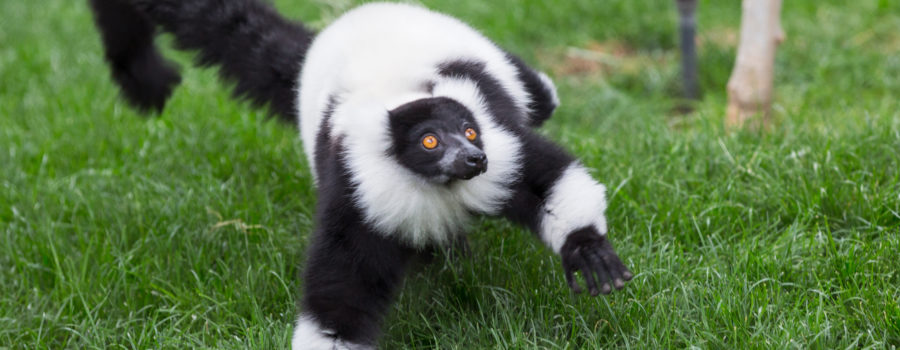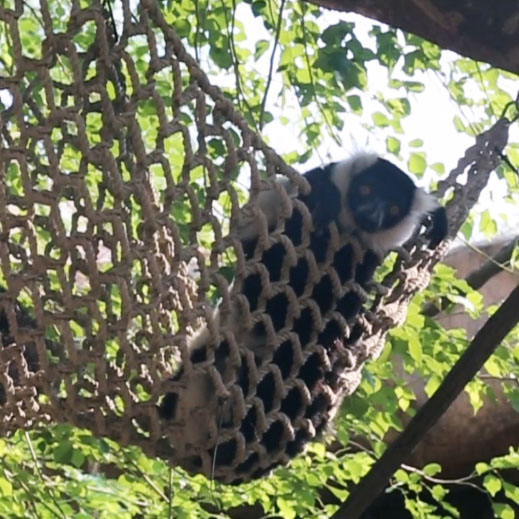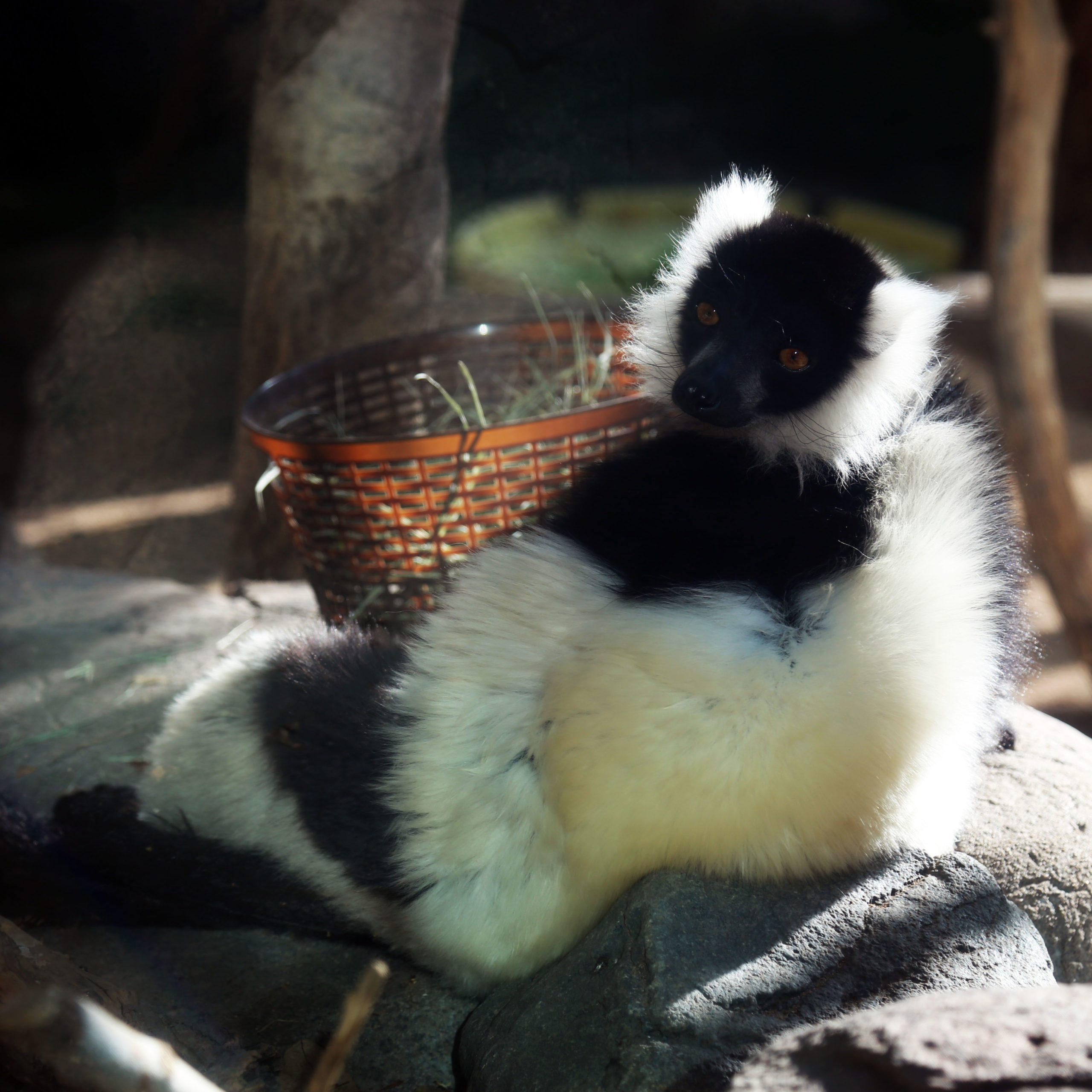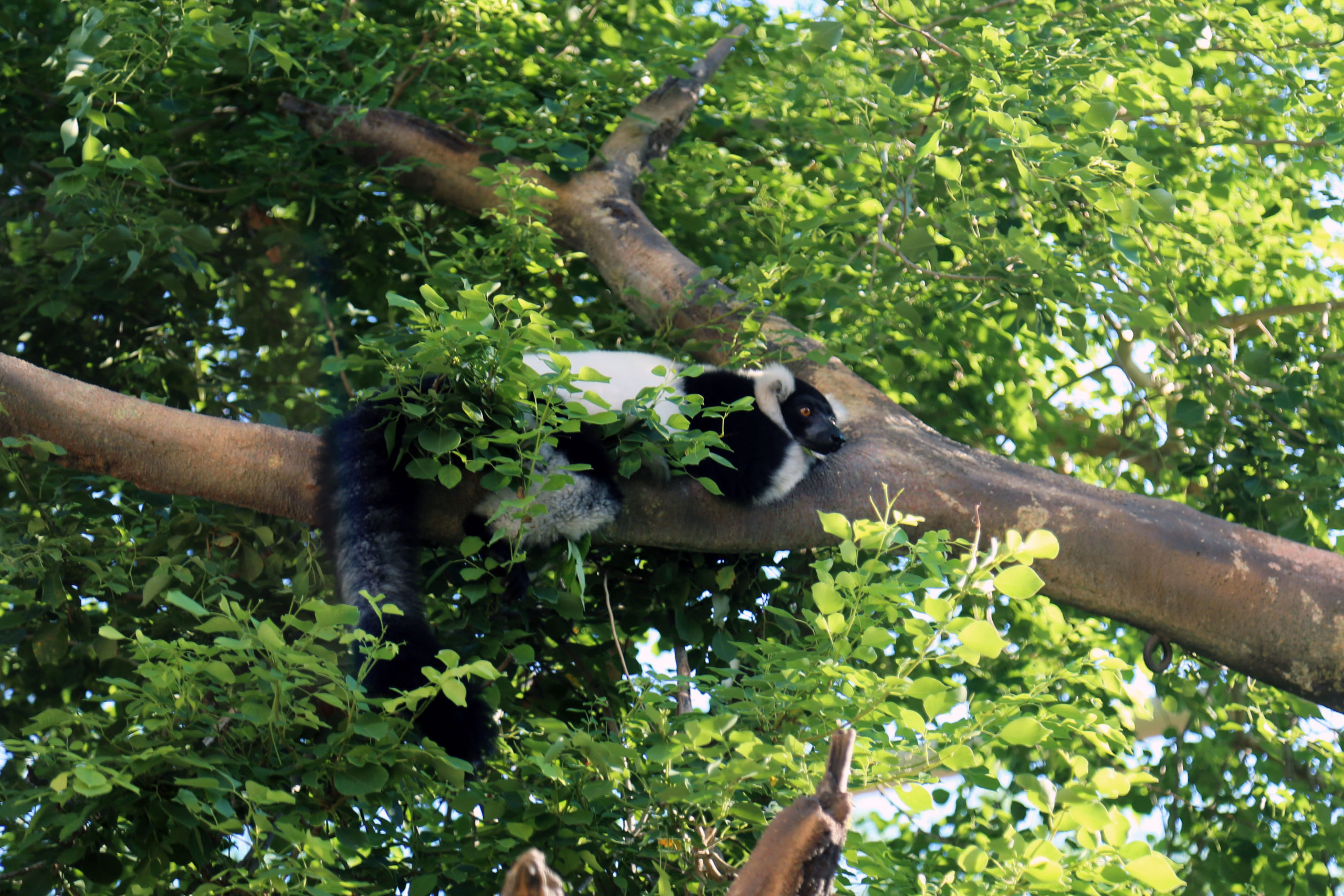As the name suggests, black and white ruffed lemurs have black and white colored bodies, but these markings differ between individuals. The general pattern is black hands, feet, tail, and facial markings with a patch of white fur on their head. Their eyes are a bright orange or yellow.
Diet: Like the majority of lemur species, black and white ruffed lemurs are almost exclusively frugivores; which is the term used to define a diet that consists of mostly fruits. They are known to be extremely selective feeders and possess the special ability to suspend from their feet to help them reach fruit on tree branches. They will sometimes eat leaves, seeds, and nectar which they can reach due to their long tongues. One unique ability of these lemurs is the ability to open the tough, fibrous flowers on the native Traveler’s tree get to the nectar inside of the flowers.
In the Wild : Black and white ruffed lemurs typically live in small family groups consisting of two to five individuals, but these small groups can come together to form one large group. These lemurs utilize a series of vocalizations to communicate with one another. These calls can alert group members of nearby threats and/or help others locate a food resource. Ruffed lemurs are thought to be the only primates that build nests for newborns. The average litter size is two or three young, and they will stay in the nest for several days before being carried in the mother’s mouth.
Conservation issues/actions: Habitat loss due to slash-and-burn agriculture, logging, and mining is a major threat to black and white ruffed lemurs. These lemurs are also susceptible to hunting because of their large size and diurnal nature. The population of lemurs has declined by more than 80% in the last 21 years. Climate change is another threat for black and white ruffed lemurs as changes in rainfall are affecting the fruits available for them to eat. You can help protect this species and their habitat by shopping for sustainably harvested wood and reducing your carbon footprint.
At the Zoo:
Lemurs are great climbers, and use their tails for balance. To enrich our lemurs and maintain a healthy range-of-motion, animal care staff provide the lemurs with ropes and platforms in their habitat. The lemurs will investigate platforms searching for bananas and berries.





